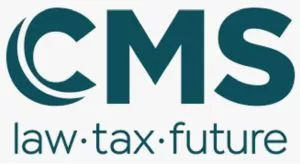With the urgency of climate change, actors in the financial sector realise the crucial role they can play in the transition to a sustainable economy. This is reflected in the number of new sustainable products aligned with the related demand from investors. The investment fund industry, increasingly considering sustainable issues, is also turning to innovative solutions to finance decarbonisation, including by integrating carbon credits into their investment strategy and structure.
Carbon credits are a market-based system of carbon offsets, arising from activities that compensate for the emission of carbon dioxide or greenhouse gas emissions, by providing for an emission reduction, avoidance, or sequestration. Carbon credits are generated by verified projects that follow international standards and are subject to a verification system.
These may be purchased or sold through a 'compliant carbon market', such as the European emission reduction trading system, or a 'voluntary carbon market' (VCM). Unlike the 'compliant carbon market', the VCM gathers entities having activities and operations that reduce the amount of carbon in the atmosphere, together with corporations and individuals looking to reduce, avoid or eliminate their carbon footprint, although they are not required to do so by law.
Gaining significant interest, carbon credit markets are expected to grow by about 40 per cent between 2022 and 2027, with the estimation of an increase of carbon credits demand by a factor of 15 or more by 2030, and by a factor of up to 100 by 20501. A special interest is given to the VCM, which provides flexibility in terms of timing, project selections, pricing, and locations, and encourages the development of innovative carbon credit projects. In addition, the VCM is expected to grow from two billion US dollars in 2020, to 250 billion US dollars in 20502.
There is today a noticeable appetite of investors for voluntary carbon credits, explained by the need to offset their carbon emission, meet their sustainable objectives, or invest in the stable pricing of carbon credits while having a positive impact on the environment.
In this context, Europe, including Luxembourg, has witnessed the emergence of a new type of investment products called 'carbon funds'. The objective of carbon funds is to channel capital to environmentally beneficial projects, which are usually nature-based solutions and diverse in terms of sectors and geographical regions. Unlike funds investing in carbon credits, carbon funds are investment vehicles that invest in projects generating compensating carbon emissions in the atmosphere and generating carbon credits, with the aim to distribute these carbon credits to their investors.
Carbon funds present unique opportunities for investors, giving them access to the growing VCM.
The carbon credits generated and distributed by carbon funds allow investors to align their investment with sustainability goals or their carbon reduction targets, ensuring them a positive environmental impact and a guaranteed financial return.
Like any carbon credit project, there is a verification and certification process of the carbon credits, that increases trust in the impact that the carbon fund claims to have on the environment. This process is usually handled by the project developers, who are responsible for measuring the carbon impact of the underlying projects, and must provide evidence of the carbon reduction through monitoring data, project reports, and other information relevant for the third-party validation entity to validate the project in accordance with the relevant chosen standards.
In that respect, carbon fund managers usually focus on building a strong and defined relationship with project developers with a view to design, develop, administrate, and monitor the nature-based solution projects, in which the fund is investing. The due diligence on and documentation of the partnership with the project developers are therefore key for the carbon fund to be able to produce high-quality certified carbon credits to the investors. After the validation phase, the project goes through a verification and performance review process (ie certification), which outlines the outcome of the project in measurable and quantitative metrics, reflecting the achievement of the targets in line with the standards. The carbon credit is then certified.
Investors receive certified carbon credits, distributed as dividends or capital gains, based on the performance of the underlying sustainable investment. In addition, the wide range of underlying nature-based projects ensure diversification of the investors' portfolio.
Notwithstanding the opportunities offered by carbon funds, setting up a carbon fund requires focus on key considerations that are different from the challenges faced by more common types of investment funds.
Carbon funds are indeed facing a higher regulatory risk due to the fragmented regulations for carbon credits, and lack of a harmonised set of rules or standards for verification of the projects. The impact of the changes in carbon regulations or policies on the value and demand for carbon credits should, for instance, not be excluded.
In addition, it should be borne in mind that the verification process of generated carbon credits requires, at the level of the fund, a robust governance with adequate methodologies and accurate data, which brings additional costs and internal resources.
Moreover, similar to other impact and environmental investing funds, the revenues derived from projects exposed to unexpected, climate-related, and other environmental risks, face the challenge of ensuring the permanence of the financial and non-financial performance of the investments.
Finally, although the structure of a carbon fund in Luxembourg would not vary much from other types of investment funds, key considerations would still likely be raised during the set-up phase. For instance, the illiquidity of the carbon credits would likely encourage the fund manufacturer to opt for a closed-ended, or semi-open-ended structure. Distribution, depending on the investors' appetite, could also include cash in addition to carbon credits, or direct holding of carbon credits by investors. The question of ownership of the carbon credits, when generated, should also be assessed, as it may require the fund to formally agree with the project owner that the fund will be the direct beneficiary of the carbon credits generated.
Although only a few pioneers have set up carbon funds at this date, this innovative and attractive solution, driven by positive environmental impact, is expected to grow. Located in the heart of Europe, Luxembourg benefits from a strategic situation within the European Union (EU), facilitating access to European markets and investors who are particularly keen to invest in sustainable innovative products.
Over the past decades, Luxembourg has pursued a coherent sustainable finance strategy, aiming to become a leading platform with a worldwide impact for green finance initiatives.
Luxembourg's strong track records in sustainable and impact investments makes it an attractive jurisdiction for climate finance funds, giving Luxembourg-domiciled funds credibility to attract investors looking for legitimate and impactful options. The constant evolution of its toolbox of products and services and number of initiatives aiming to promote investment in sustainable projects solidify Luxembourg's position as a leader in sustainable finance.
Amongst them, the Luxembourg Sustainable Finance Initiative3, a non-profit organisation designing and implementing the national sustainable investment strategy, or the Luxembourg Green Exchange4, exclusively listing securities that meet specific environmental, social and governance criteria, reinforce the infrastructure for sustainable projects to efficiently raise capital.
In the specific sphere of climate investing, dedicated financial help and assistance are designed to support the creation and development of investment solutions, channelling capital to climate projects, such as the International Climate Finance Accelerator. Luxembourg also follows a sustainable finance roadmap and has been implementing an international climate finance strategy since 2021, with key focus points such as the increase of funding and focus on developing countries, public and private partnerships, the alignment with global goals and focus on impact, and the implementation and funding of solutions like carbon funds.
Apart from being a centre for sustainable finance, Luxembourg is more generally the European nerve centre for investment funds, recognised worldwide for its stable and well-developed legal and regulatory framework, renowned for its flexibility, efficiency, and investor-friendly nature. Luxembourg also benefits from a skilled workforce, experienced in a broad spectrum of services covering the structuring, administration, and management of investment funds.
For the past two decades, Luxembourg has been introducing new products for alternative investments, notably the Investment Company in Risk Capital (SICAR) in 2004; the Specialised Investment Fund (SIF) in 2007, offering more flexibility and popular for private equity, real estate and hedge funds; the Undertaking for Collective Investments (UCI) lastly updated in 2010; or the well-known Reserved Alternative Investment Fund (RAIF) in 2016, a lighter-touch regulatory approach suitable for smaller and more specialised funds.
With the aim to constantly innovate and adapt its toolbox to market needs, Luxembourg further modernised its regulatory framework in 2023 towards more opening of private market funds to retail investors (commonly referred to as 'retailisation'), by inter alia5 (i) amending the definition of 'well-informed investor' to lower the minimum investment threshold of EUR 125,000 to EUR 100,000; (ii) extending the timeframe to reach the minimum capital from 12 months to 24 months for SICARs, SIFs and RAIFs, and from six months to 12 months for UCI Part II funds; and (iii) extending the choice of legal forms available for UCI Part II funds, notably introducing the possibility for a special limited partnership (société en commandité spéciale (SCSp)) and partnership limited by shares (société en commandite par actions (SCA)).
Luxembourg's combination of a stable and innovative framework, deep industry expertise, diverse fund structures, and a strong reputation for sustainable finance, makes it a compelling jurisdiction for innovative finance products contributing to decarbonisation, such as carbon funds, that meet investors' demand to channel their funds towards a sustainable future. There is no doubt that all ingredients have been combined for the future of carbon funds in Luxembourg to contribute towards a decarbonised economy.
Footnotes
1 https://www.mckinsey.com/capabilities/sustainability/our-insights/a-blueprint-for-scaling-voluntary-carbon-markets-to-meet-the-climate-challenge
2 https://www.morganstanley.com/ideas/carbon-offset-market-growth
3 https://lsfi.lu/
4 https://www.luxse.com/discover-lgx
5 https://www.lexgo.lu/fr/actualites-et-articles/12872-adoption-of-the-bill-of-law-8183-modernising-the-luxembourg-toolbox-towards-more-retailisation
The content of this article is intended to provide a general guide to the subject matter. Specialist advice should be sought about your specific circumstances.


